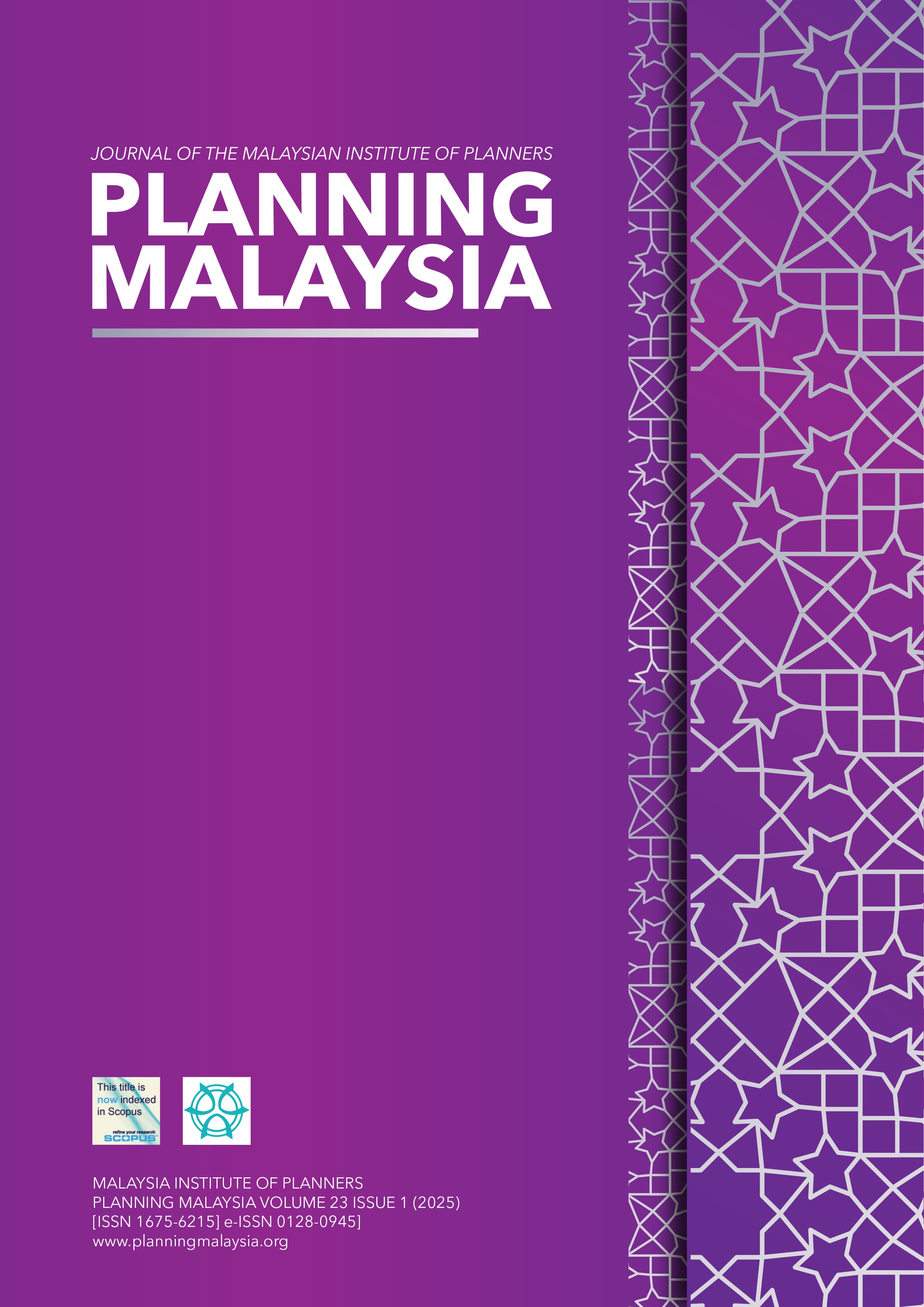THE SOCIO-TECHNICAL SYSTEM FRAMEWORK FOR MAINTAINING THE SMART HERITAGE OF CHENGDU’S HISTORICAL AND CULTURAL VILLAGES
DOI:
https://doi.org/10.21837/pm.v23i35.1695Keywords:
Smart Heritage, Socio-technical system, Chengdu's historical and cultural villagesAbstract
As the development of smart cities continues to advance, Smart Heritage has become an essential component of cultural preservation and inheritance. The cultural Heritage of Chengdu's historical and cultural villages possess significant cultural and social value and currently faces complex challenges in terms of conservation. Based on the actual situation of Chengdu's historical and cultural villages, employs qualitative research methodology, including semi-structured interviews with experts, to construct a socio-technical system framework supporting the implementation of smart Heritage in Chengdu's historical and cultural villages, aiming at effective management and conservation of Smart Heritage. The study first identifies the expertise areas and the number of experts involved. It is divided into three main parts: the socio-technical system's social, technological, and environmental dimensions. Based on the findings of this study, it is evident that the Smart Heritage of Chengdu's historical and cultural villages require interdisciplinary cooperation and coordination across various sectors. Additionally, there is a need for continually updated and improved technological support systems to adapt to changes in the era and demands. This framework is believed to provide valuable references and guidance for managing and conserving Smart Heritage in Chengdu's historical and cultural villages.
Downloads
References
Ab Dulhamid, H., Ismail Isa, M., & Mohamed, B. (2023). Motivation of outdoor. Recreation participation among rural and urban communities. Planning Malaysia Journal of the Malaysian Institute of Planners, 21, 470–483. DOI: https://doi.org/10.21837/pm.v21i25.1251
Ali, M., Mohd Ismail, K., Syakirin, K., Hashim, H.-Y., Suhaimi, S., Muhammad, & Mustafa, H. (2018). Heritage building preservation through building information modelling reviving cultural values through level of development exploration. Planning Malaysia Journal of the Malaysian Institute of Planners,16, 62-72. DOI: https://doi.org/10.21837/pm.v16i6.461
Adrian, S. M., & Kurniawan, K. R. (2020). Smart Heritage: Media for Realising Cultural Heritage Conservation in The Smart City Era. IOP Conference Series: Earth and Environmental Science, 452, 012058. https://doi.org/10.1088/1755-1315/452/1/012058 DOI: https://doi.org/10.1088/1755-1315/452/1/012058
Batchelor, D., & Schnabel, M. A. (2019). Smart heritage in selected Australian local government smart city policies. Revisiting the Role of Architecture for 'Surviving’ Development, 245–254. https://doi.org/10.26686/wgtn.14838066.v1 DOI: https://doi.org/10.26686/wgtn.14838066.v1
Batchelor, D., Schnabel, M. A., & Dudding, M. (2021). Smart Heritage: Defining the discourse. Heritage, 4(2), 1005-1015. https://doi.org/10.3390/heritage4020055 DOI: https://doi.org/10.3390/heritage4020055
Borda, A., & Bowen, J. P. (2017). Smart Cities and Cultural Heritage – A Review of Developments and Future Opportunities, BCS Learning and Development Ltd. ,9-18. https://doi.org/10.14236/ewic/eva2017.2 DOI: https://doi.org/10.14236/ewic/EVA2017.2
Bostrom, R. P., & Heinen, J. S. (1977). STS Perspective MIS Problems and Failures: A Socio-Technical Perspective. MIS Quarterly, 1(3), 17-32. DOI: https://doi.org/10.2307/248710
Dulhamid, H. A., Isa, M. I., Mohammed, B., Sazali, F., & Salim, N. (2023). An examination of outdoor recreation participation constraints among rural and urban communities. Planning Malaysia Journal of the Malaysian Institute of Planners, (21). 510-524. DOI: https://doi.org/10.21837/pm.v21i28.1349
Elisa Giaccardi. (2012). Heritage and social media Understanding heritage in a participatory culture. New York. DOI: https://doi.org/10.4324/9780203112984
Geels, F. W. (2004). From sectoral systems of innovation to socio-technical systems: Insights about dynamics and change from sociology and institutional theory. Research Policy, 33(6–7), 897–920. https://doi.org/10.1016/j.respol.2004.01.015 DOI: https://doi.org/10.1016/j.respol.2004.01.015
Gonizzi Barsanti, S., Caruso, G., Micoli, L. L., Covarrubias Rodriguez, M., and Guidi, G.: 3D Visualisation of Cultural Heritage Artefacts with Virtual Reality devices, Int. Arch. Photogramm. Remote Sens. Spatial Inf. Sci., XL-5/W7, 165–172, https://doi.org/10.5194/isprsarchives-XL-5-W7-165-2015, 2015. DOI: https://doi.org/10.5194/isprsarchives-XL-5-W7-165-2015
Hongji, Z., & Yong, L. (2017). Research Status and Prospect of Digital Protection of Traditional Villages in China.Resource Development&Market, 33(8), 912-915.
Ismail Isa, M., Abdul Rahman, N., Abdullah, K., Lutfi Ahmad, A., Rijal Mohamad, M., Rahmat, A., & Nabila Omar, F. (2022). Development of rural tourism in Perak Tengah district based on local authority perspectives. Planning Malaysia Journal of the Malaysian Institute of Planners, 20, 405-419. DOI: https://doi.org/10.21837/pm.v20i23.1175
Jin, L., & Haopeng, L. (2021). From Typology to Digitalization: Research on Path Construction of Traditional Village Protection. Packaging engineering, 42(14),56-64.
Khalaf, M. (2019). Smart cultural heritage: Technologies and applications. 2nd Smart Cities Symposium (SCS 2019), (6 pp.). https://doi.org/10.1049/cp.2019.0183 DOI: https://doi.org/10.1049/cp.2019.0183
Li, T., Horkoff, J., & Mylopoulos, J. (2018). Holistic security requirements analysis for socio-technical systems. Software and Systems Modeling, 17(4), 1253–1285. DOI: https://doi.org/10.1007/s10270-016-0560-y
Luo, F., Isa, M. I., & Roosli, R. (2024). Research status and development direction of smart heritage: A bibliometric review (1994-2024). Journal of Asian Architecture and Building Engineering, 1–24. https://doi.org/10.1080/13467581.2024.2397104 DOI: https://doi.org/10.1080/13467581.2024.2397104
Majchrzak, A., & Borys, B. (2001). Generating testable socio-technical systems theory. Journal of Engineering and Technology Management - JET-M, 18(3–4), 219-240. https://doi.org/10.1016/S0923-4748(01)00035-2 DOI: https://doi.org/10.1016/S0923-4748(01)00035-2
Parry, R. (2010). Museums in the Digital Age. Routledge Published.London.
Poulopoulos, V., & Wallace, M. (2022). Digital Technologies and the Role of Data in Cultural Heritage: The Past, the Present, and the Future. Big Data and Cognitive Computing, 6(3), 1–19. https://doi.org/10.3390/bdcc6030073 DOI: https://doi.org/10.3390/bdcc6030073
Qu, S. Q., & Dumay, J. (2011). The qualitative research interviews. Qualitative Research in Accounting& Management, 8 (3),238-264. DOI: https://doi.org/10.1108/11766091111162070
Rahmat, A., Rahman, N. A., Mohamad, M. R., Ahmad, A. L., Abdullah, K., Isa, I., & Nabilah Omar, F. (2023). Development model for virtual reality (VR) tourism in rural areas: a GIS-based approach. Planning Malaysia Journal of the Malaysian Institute of Planners, 21, 496-509. DOI: https://doi.org/10.21837/pm.v21i28.1348
Trist, E. (1980). The Evolution of socio-technical systems: A conceptual framework and action research program. In Conference on Organisational Design and Performance. (2) 1–67.
Yakel, E. (2007). Digital curation. In OCLC Systems and Services. 23 (4),335–340. DOI: https://doi.org/10.1108/10650750710831466
Downloads
Published
How to Cite
Issue
Section
License

This work is licensed under a Creative Commons Attribution-NonCommercial-NoDerivatives 3.0 Unported License.
Copyright & Creative Commons Licence
eISSN: 0128-0945 © Year. The Authors. Published for Malaysia Institute of Planners. This is an open-access article under the CC BY-NC-ND license.
The authors hold the copyright without restrictions and also retain publishing rights without restrictions.


